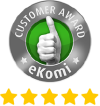Tom Joyce
Death to the Office? Hybrid, Remote and the Future of Working Together
- October 5, 2021
- , 11:36 am
- , Collaboration, Uncategorized @en-us
The office as we once knew it is gone. But is it really dead?
Remote, hybrid and flexible working models are now the norm; 24% of businesses surveyed by the ONS stated that they intended to adopt more home working going forward. In the same study, 85% of workers disclosed their preference for a “hybrid” approach of both home and office working.
It looks like the office – although totally transformed – is here to stay, too.
With a greater demand for hybrid and home working, even among employers, greater flexibility in the workplace can only be a good thing – but will collaborative teams still thrive?
Concerns over collaboration, hard lessons over hardware
The WFH revolution hasn’t been without challenges. While some solo workers, contractors, entrepreneurs and startups are thriving, many people who once held office-based roles are feeling the negative effects of a corporate world without an office.
A study of 3,000 UK remote workers showed that 67% felt disconnected from their colleagues, while half (49%) said this sense of disconnection was having a negative impact on how they viewed their job. The ONS study found that challenges of collaboration were the greatest negative to remote and home working.
A study in Spain found that a third of households considered their remote working spaces inadequate – citing a lack of technology and resources, as well as not having the appropriate environment for their work.
How can this be remedied?
Video conferencing tools, like the now infamous Zoom and Microsoft Teams, are still the best answer to engagement and connection – but they require a cultural shift to be truly effective. Trust and teamwork are now the most important factors to success in the new world of work, where check-ins and feedback are vital to maintaining employee engagement. Honest reviews that focus on positive personal attributes, from managers who know their teams’ strengths and areas for improvement, will guide and engage people, even without face-to-face meetings.
The goal is to foster a positive remote working culture – free of paranoia and the sense of isolation. Inclusivity and giving everyone a turn to speak (in a manner which suits them best) will help bridge the perceived gaps in human interaction.
On the hardware front, cloud solutions, specifically those which integrate deeply with an organisation’s full software suite, are a key investment for businesses embracing the future of work.
Working together on projects in Confluence, a key pillar of the Atlassian stack, gives teams working remotely or in a hybrid setting the greatest possible collaborative environment. Atlassian Cloud migration is a game-changer for collaborative working over many types of hardware. Unlike other collaborative tools like Google Drive and Office 365, Confluence can be modified heavily with HTML and CSS, to suit any kind of workflow.
Confluence Cloud can be run as an app or in-browser, giving everyone in the team the same experience – regardless of the hardware they have – and all work is centrally managed and accessible, not just locally stored.
See also: How to hire Confluence contractors for a custom cloud implementation
But what about the lack of adequate workspaces? That’s where a hybrid model will truly shine – giving teams the flexibility of where they work from, with an option that gives them focus space and in-person collaboration. It also makes working with contractors much more streamlined, giving an opportunity for an excellent onboarding process and face-to-face working while letting them do the best job they can from the environment of their choice.
Best practices for hybrid working offices
Working collaboratively in the cloud solves many of the challenges of remote and hybrid working. But the office space you have – or decide to move to – needs to be optimised for it. Hybrid offices will be used differently from fully-staffed setups, to suit how people now work.
It’s likely that fewer people will be carrying out solo, high-focus work in the office, but this should still be catered to. What teams now need are more collaborative workspaces, formal meeting spaces and better casual spaces.
One of the best solutions for open-plan environments is to build “sections” suited to different types of work. By clustering desks together, using booths, and arranging furniture or plants into borders, an office space can be optimised for hybrid working.
With dividers, booths and desks, focus spaces can be created where solo work can be carried out by anyone who still needs them. Active collaboration areas, with moveable seating, dividers, whiteboards, large digital screens and supplies, should be positioned further away from focus areas – and if possible, should have acoustic treatment applied to keep noise from travelling.
A space to hold private and confidential meetings is still a must, even with fewer people in the office – so don’t turn the boardroom into a gym just yet!
Last but by no means least, casual lounges, places to eat and recreational areas are vital to maintaining the bonds that make a team great. Take the opportunity to make these as engaging and comfortable as possible.
Hire Atlassian contractors suited to hybrid and remote working
ClearHub helps the world’s best companies hire Atlassian contractors, for custom implementations and cloud migrations – suited to the new ways of working.
Want to know more? Get in touch with the ClearHub team today – call +44 (0) 2381 157811 or send your message to info@clearhub.tech.



